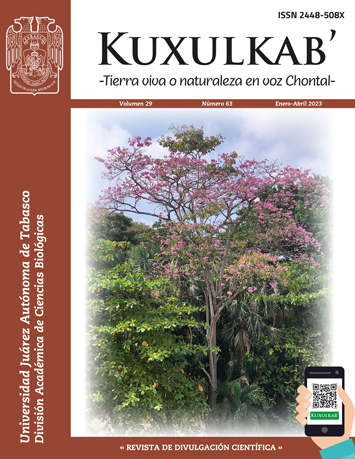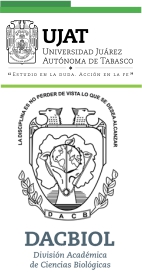EVALUATION OF THE THERMAL CONDITION OF AN INTERIOR SPACE
A SIMPLE, PRACTICAL AND ECONOMIC APPROACH
DOI:
https://doi.org/10.19136/kuxulkab.a29n63.5291Keywords:
Heat Index, Natural ventilation, Mathematical model, Arduino Uno, CO2 calculatorsAbstract
Much of our time is spent in closed spaces, which in the best of cases have air conditioning as a synonym for adequate thermal comfort. But when the power or air conditioning equipment fails, opening doors and windows often does not produce the comfort expected by the occupants. The objective of this article was to show a simple procedure to evaluate the thermal condition, in hot season, of an occupied interior space using a teacher's cubicle as an example. The environmental parameters of the interior were obtained from simple equipment and low-cost sensors programmed with the Arduino uno card. Simple calculators on the internet and simple mathematical models are shown to be used to estimate the expected carbon dioxide concentration in the cubicle, an indicator of the level of ventilation. Using the heat index, it was obtained that the thermal condition of the cubicle was «extreme caution».
Downloads
Downloads
Published
Issue
Section
License
Copyright (c) 2023 Kuxulkab'

This work is licensed under a Creative Commons Attribution-NonCommercial-ShareAlike 4.0 International License.
- Los autores que publiquen en Kuxulkab' aceptan las siguientes condiciones como política de acceso abierto:
- Que conservan los derechos de autor y ceden a la revista el derecho de la primera publicación, con el trabajo registrado con la licencia de atribucion de "Creative Commons", que permite a terceros utilizar lo publicado siempre que mencionen la autoría del trabajo y a la primera publicación en esta revista.
- El autor puede realizar otros acuerdos contractuales independientes o adicionales para la distribución no exclusiva de la versión del artículo publicado en esta revista, como por ejemplo incluirlo en un repositorio institucional o publicarlo en un libro, siempre que se indique claramente que el trabajo se publicó por primera vez en esta revista.









